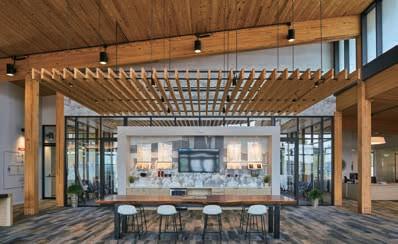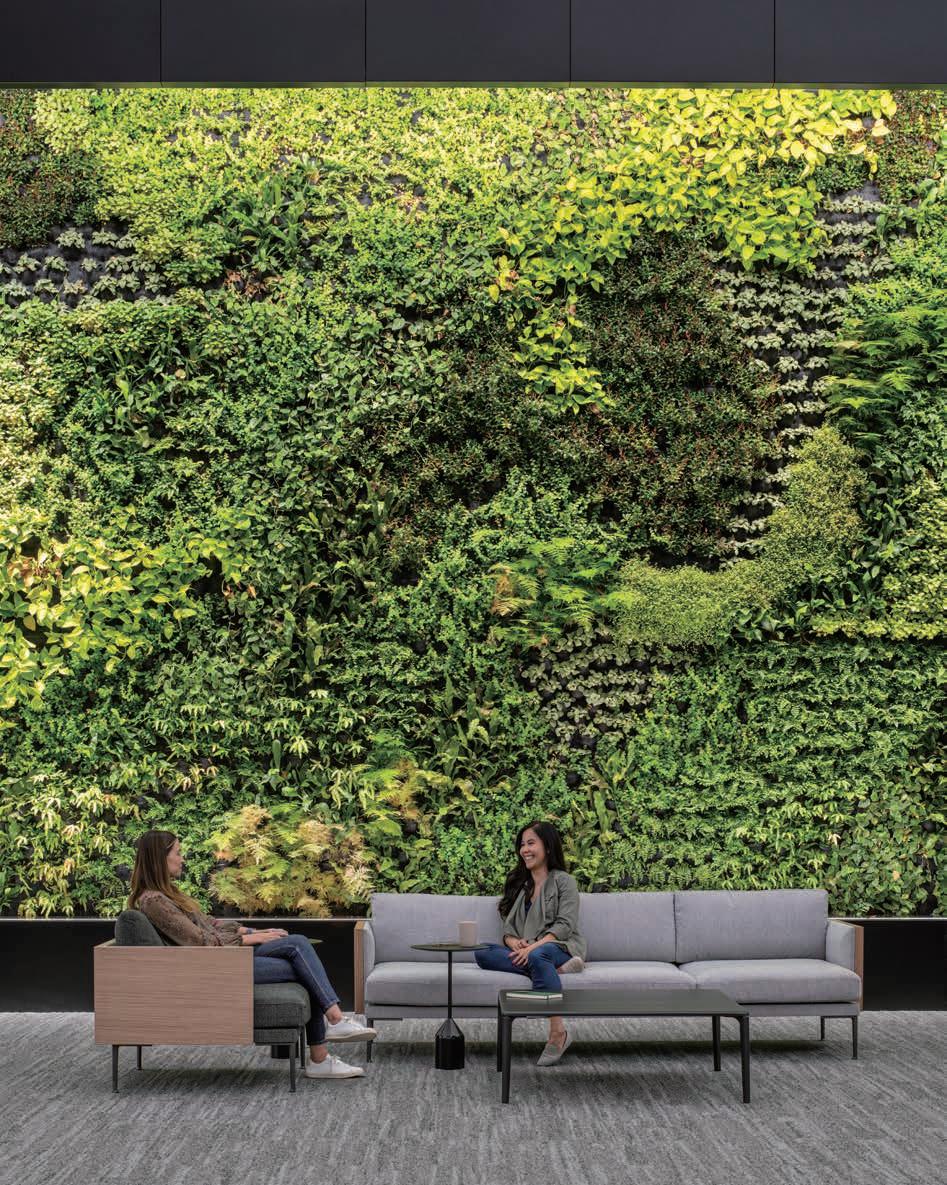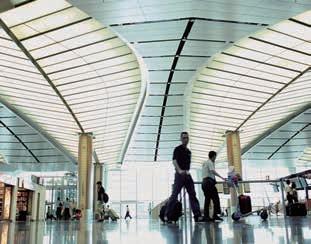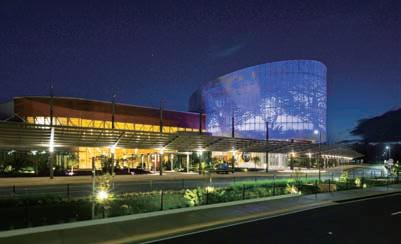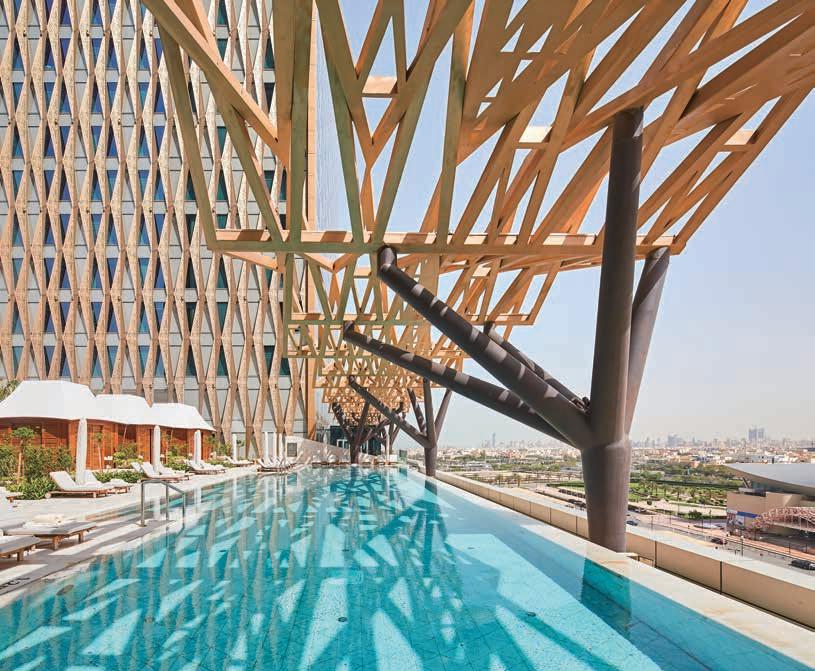

It was a suNNy sprINg Day whEN we LaNDED IN TOkyO. Just a week prior, we had been in San Francisco for a variety of leadership meetings. Throughout the two decades of our partnership as co-CEOs who live 3,000 miles apart, in Los Angeles and Washington, D.C., we have learned to make the most of the times when we are together in person. This was one such opportunity. After the first leg of our two-week whirlwind trip, we flew to Japan to meet with Gensler leaders in Asia. As we rolled through the city streets in a taxi, tired from the intensity of the past week, we started talking about our expectations and excitement about the next few days. Looking back, it was that conversation that began our journey toward writing this book.
Many people say they do their best thinking away from their regular daily activities, and that was probably the catalyst for us as well. Being in that cab, on that day, and in that place, put us in a zone where we both could see the impact our firm was having across cities all over the world more clearly than ever. We experienced a shared “eureka” moment about Gensler’s purpose and the purpose of design, and we had to try to capture it in writing.
tackling complex challenges, from social injustice to climate change, war, and health crises. With systems thinking and people-first compassion, design can make sense of complex and intangible inputs to form outcomes with enduring impact. This is the role of design. We knew that day in Tokyo that it was time to share this emerging future reality.
That pivotal taxi ride happened in March 2019. We could never have known then that one year later, the COVID-19 pandemic would bring life as we knew it to a halt. As the effects of COVID devastated our cities, all of our prior realizations about their vulnerability came true. From publictransit deficiencies, to housing affordability and homelessness challenges, to workplace concerns and the need for better live-work and mixed-use spaces, many of the issues that Gensler had already been examining for more than a decade were suddenly and acutely putting cities at risk. We knew that design had to rise to the challenge, helping to revitalize our urban areas, improve human health, and elevate how people live, work, and play.
But COVID was only one of the crises that would arise over the next two years. The pandemic was a wake-up call for climate change, as our collective attention on health and wellness gave way to a new focus on the health of our planet. In addition, we saw the world grappling with social justice inequities, geopolitical conflict, supply chain disruption, and dramatic economic volatility, all of which changed the context and complexity of finding solutions.
As we were conceiving this book, each successive crisis represented a chance for us to write a slightly different version of our story, but none felt like the right version. Then, as the world’s crises continued to multiply, we had our second “eureka” moment. We
recognized a paradigm shift in the way we understand and approach crises. Our world today is characterized not by an occasional single crisis and recovery, but rather by multiple overlapping crises—a phenomenon that we now call the crisis multiplier.
The team of leaders who have held the reins at Gensler over the past 25 years have experienced many crises. Our view has always been that we find strength by embracing positive change for the future. Doing so has meant having unwavering openness to organizational transformation and sometimes making short-term personal and meaningful sacrifices. These transformations have led to opening new locations, offering new types of services, leveraging new design innovations and technologies, and pursuing different opportunities, while always focusing on deepening our client relationships.
The paNDEMIC was a wake-up CaLL FOr CLIMate ChaNge, as Our COLLeCtIve attENtION ON hEaLth aND wELLNEss gave way tO a NEw FOCus ON the hEaLth OF Our pLaNet.
The rapid transformations brought about by the crisis multiplier have required more risk and more client focus than ever before. Despite these challenges, from 2020 to 2023 our firm not only exceeded financial milestones but also, and more important, impacted millions of lives through our projects and built our brand into a global go-to design resource. The experience of leading through adversity and designing in times of radical change is the story of this book.




WHERe We sTARTED
As a young girl in Chicago, where architecture is part of the city’s heartbeat, Diane knew early on what she wanted to be when she grew up. Building things with bricks—of both the LEGO and the real variety—and constructing elaborate Barbie houses with her sister were daily diversions for the young designer. Diane’s mother, a trained artist, created a home life that was grounded in creativity, art, and music. At eight years old, Diane discovered Architectural Record magazine among the issues of Whole Earth Catalog, National Geographic, and books on art, impressionism, and furniture design that filled her family’s household. “I want to do that,” she thought, looking through the beautiful buildings in the magazine pages. Her interest in architecture only grew from there. As she once joked at a Gensler fireside chat with her colleagues, “I would take my Arch Record magazine and my licorice candy stash to our basement shelter when a tornado was coming.”
Although most of her high school friends planned to go to colleges in the Midwest, Diane’s French horn teacher, Helen Kotas Hirsch, urged her to step outside her comfort zone and attend MIT instead. Mrs. Hirsch, as the first woman to be the lead brass instrumentalist for any symphony in the world, knew what it meant to break through barriers. She encouraged Diane to be bold and to strive for the best.
Diane attended MIT as one of only 80 women, and one of 25 Black students, in her class of 1,000. After completing her undergraduate degree in architecture at MIT, she received her MBA from UCLA. Returning to her hometown of Chicago, Diane began her architecture career at Skidmore, Owings & Merrill before moving on to A. Epstein and Sons. Interested in understanding the “owner” side of things, Diane also spent a few years in real estate development at the firm Olympia & York, the developer of the World Financial Center in New York and Canary Wharf in London. Diane’s multidisciplinary career journey allowed her to explore both the inside and the outside of building design, as well as real estate and business management.
Diane eventually put down her roots at Gensler as leader of the Washington, D.C., office. All of her prior experiences came together perfectly in the role of managing director of a design and architecture practice—joining Gensler was the most meaningful turning point of Diane’s career. From its signature leadership in workplace design to its entrepreneurial culture, the firm offered her the opportunity to be part of a bigger mission and purpose. Through her focus on strategy, design, brand, and master planning, Diane grew the office and region while becoming an influential leader in the firm. When Art Gensler asked Diane to be co-CEO in 2005, she became the first Black architect to lead a large global architecture firm and, according to the online magazine Dezeen, one of only a very small group of women in leadership of the most influential design firms in the world.
Andy loved sketching and building models from sugar cubes and balsa wood from the earliest days of his childhood. The grandson of Jewish immigrants from Russia, he spent his youth working at Cohen’s Dairy, a cheese store opened by his grandfather in the early 1900s. Running the business was a family affair; Andy’s father, Jerry Cohen, also worked there as a child and later, after returning from World War II and serving at D-Day, took over the store from his parents. In keeping with tradition, Jerry brought five-year-old Andy into the fold, expecting that someday his young son might run the shop, as he had.
Those formative years in the store on the Lower East Side of Manhattan instilled in Andy a deep appreciation for the diversity of people’s individual personalities and needs. Customers and employees came from many different cultures, language backgrounds, and ethnicities; interacting with them equipped Andy with the values and interpersonal skills that would serve him for years to come. At the same time, Andy’s interest in design and the built environment continued to grow, and by high school, he knew he wanted to be an architect and designer, with
the ability to make a difference in the world. He applied and was accepted to Pratt Institute in Brooklyn, New York, to be close to his family and continue to work at the store.
As Andy learned and grew at Pratt, on track to become the first college-educated male in his family, his father was diagnosed with terminal lung cancer. The two of them had a serious discussion about Andy’s future— whether he should leave school to run the dairy store or continue along his path toward design and architecture. Ultimately, Jerry told him something that changed Andy’s life forever: “Son, you love design,” he said. “Go follow your passions, follow your dreams, because if you do what you love, you will always be totally fulfilled and successful in your life.”
Jerry passed away during Andy’s junior year of college, after a long, hard battle with cancer. Andy and his mother, Bea, closed the family store after 75 years and three generations, knowing they were honoring Jerry’s final wishes. Andy graduated from Pratt and interviewed at a small, start-up design firm in Los Angeles called Gensler and Associates. He knew he had found a professional home that would support him, encourage his passions, and allow him to spread his creative wings.
Andy thrived in Gensler’s entrepreneurial culture. In 1985, at age 30, he became the youngest principal in the firm’s history. His career flourished as he was mentored by Ed Friedrichs and Art Gensler, who impressed upon him the importance of deep relationships with clients, world-class design, and the firm’s unique “one-firm firm” culture. In 1993, he was promoted to lead the Los Angeles office. Andy worked closely with Gensler’s leadership to craft an initial vision of the firm, defining Gensler’s mission and purpose to make a difference in the world.
Andy led the design of some of the most highly lauded workplace and architecture projects at the time. He also launched several of the firm’s core practice areas, including aviation, hospitality, entertainment, urban planning, and mixed use. As of 2024, Andy has been at Gensler—the place where he spent his entire architecture career—for 43 years.
A NEW GENERATION OF LEADERSHIP
In 2005, Art Gensler asked us to follow in his footsteps as co-CEOs of the firm. Our shared drive and vision, along with our complementary experiences and skills, exemplified Gensler’s unique potential. Now in our 19th year as co-CEOs, we continue to be energized by the amazing talent, accomplishments, and determined optimism of the global Gensler team.
At the time, there could not—and should not—have been a single leader to fill the shoes of our founder, Art Gensler. There is, and always will be, only one Art. The concept of a dynamic partnership taking the reins was the right strategic move for the firm’s next chapter, and Gensler’s leadership and governance transition was seamless.
A spirit of collaboration and an entrepreneurial culture have always been central to the firm’s mission and vision. We call this unique culture our one-firm firm philosophy. Most of our offices, practice areas, and studios at the time were already led by two or more people. Through experience, we have found that a collaborative co-leadership model allows people to build on and bolster each other’s key skills. It also fits perfectly into Gensler’s flat, nonhierarchical structure—one in which every person is called on to be a leader, to take ownership and responsibility, and to embody a
founder’s mentality, staying laser focused on our firm’s core principles and mission, even as we grow and expand through our “constellation of stars” philosophy.
We believe in leveraging people’s “aces and spaces,” meaning we pair leaders with reciprocal strengths while also celebrating our unique and different skills. By assembling a diverse group of people with different perspectives, experiences, and areas of expertise, we amplify our firm’s innovation and strategic thinking. When people’s unique passions coalesce, creative sparks fly. The equation of collaborative leadership that has defined Gensler’s growth and success is 1 + 1 = 5.
A spIrIt OF COLLabOratION aND aN ENtreprENEurIaL CuLture have aLwaYs bEEN CENtraL tO the fIrM’s MIssION aND vIsION.
Through collaborative leadership, we can achieve more than we have ever thought possible. Together, we are tenacious and hold a profound belief in the transformative power of design. This is the ethos that underpins every decision we and Gensler’s leadership team have made. Our purpose as a firm and as leaders in the design industry has never been more evident: Creating a Better World Through the Power of Design.



